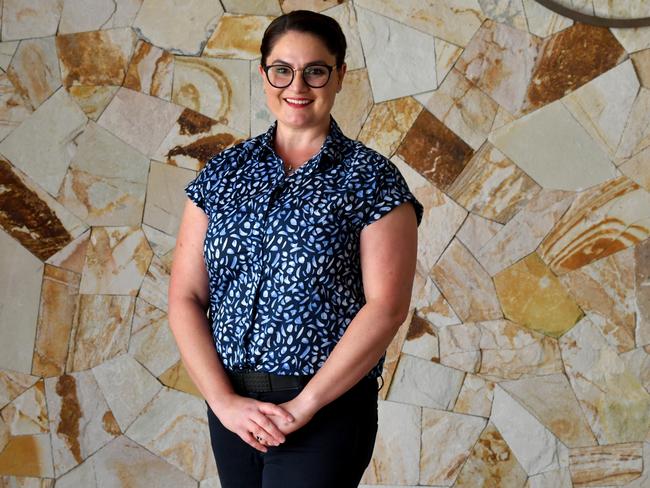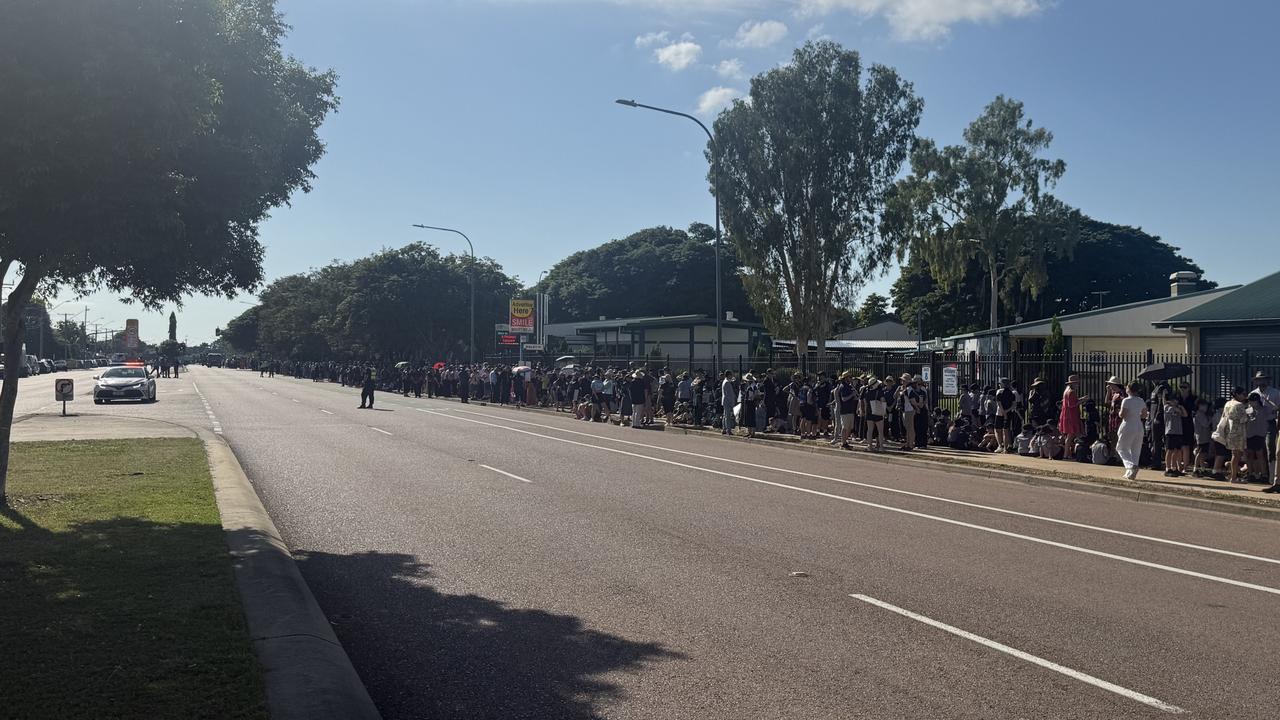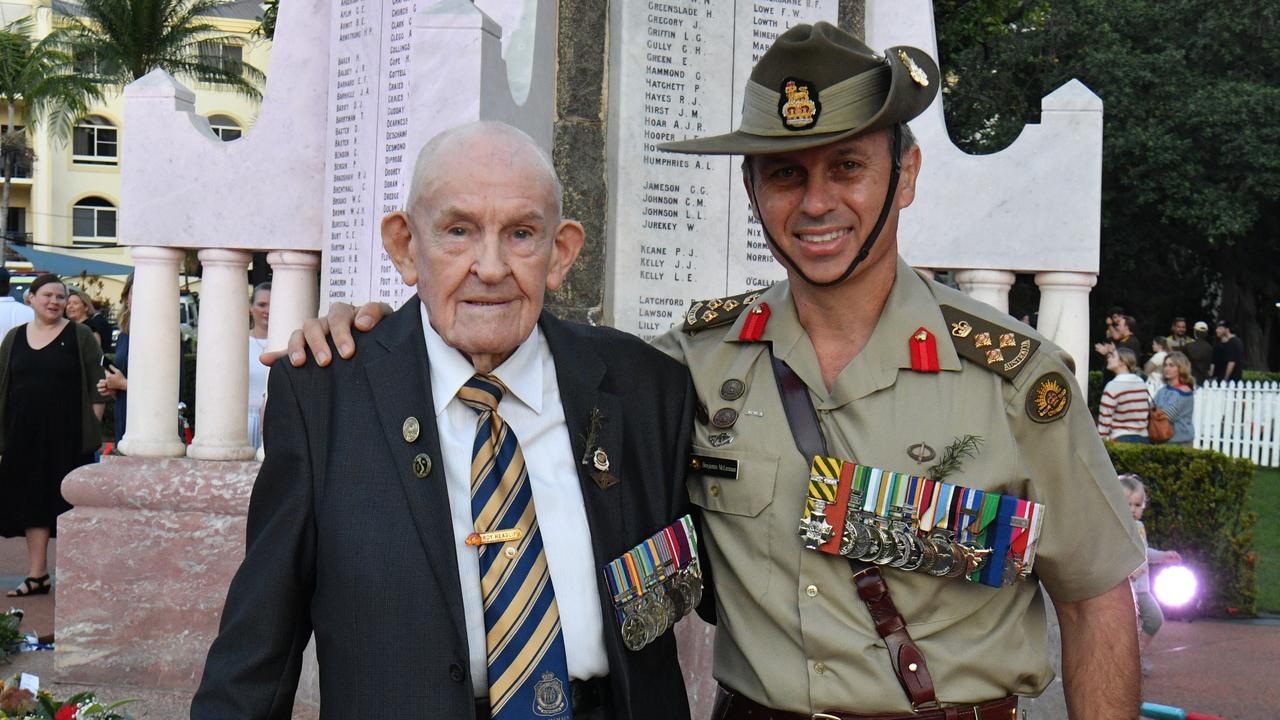Brain aneurysm awareness: Why a conversation could save your life
What started out as partial hearing loss and semi-regular headaches for me turned out to be just the tip of the iceberg. Now I have a tough decision to make.

Townsville
Don't miss out on the headlines from Townsville. Followed categories will be added to My News.
“They have found an aneurysm.”
These five words, while delivered delicately and calmly, triggered panic in what had already been the worst year of my life.
2023 for me began sitting in my backyard in Tasmania watching the New Year’s fireworks in the distance, just hours before catching a flight to say goodbye to my Dad, who was in Townsville University Hospital’s Intensive Care Unit after suffering a sudden brain aneurysm rupture at age 65.
It happened quickly, without warning and to be honest I’m still in disbelief 14 months after receiving the phone call that threw my world entirely off its axis.
I began 2024 by preparing to meet a neurology team on the same floor of the hospital where we all said our goodbyes to discuss my own surgery to fix a brain aneurysm that could also potentially cut my life short.
But rewind slightly to the reason I’m penning this piece: To send a strong message in the wake of Brain Awareness Week to anyone reading to listen to your body and talk to your family and GP about any worries, no matter how small you think they might be.
When I suddenly lost part of my hearing in my right ear shortly after moving home to Townsville in August, my GP – the wonderful Dr Sarah Kleinman – sent me for a brain MRI given my semi-regular headaches and my family history to rule out an aneurysm.
Just over four years before my dad’s death, his younger sister, my Aunty Sandra, also died from a ruptured brain aneurysm aged just 56.
The first thing I said to Dr Kleinman was: “If I do have one, there’s nothing they can do anyway, right?”
“Absolutely not,” she said. “That’s one of the most common misconceptions. There’s actually a lot you can do about brain aneurysms.”

After it was confirmed I had a small ‘berry’ aneurysm, I was referred to one of North Queensland’s and Australia’s top neurosurgeons here in Townsville, Dr Eric Guazzo OAM.
Dr Guazzo explained that while my aneurysm is small and has only a minor chance of rupturing now, the odds of it doing so increases slightly each year, and with my dad and aunt passing away in their 50s and 60s, I was an excellent candidate for surgery to remove the risk altogether while I’m young.
While aneurysms can sometimes sound like a death sentence (often referred to as “the silent killer” as they can sometimes burst with no warning), Australia’s Brain Foundation says brain aneurysms are actually quite common and most do not cause any symptoms or problems.
However, a small proportion of aneurysms can and do rupture, leading to bleeding in the brain – a type of stroke called a subarachnoid haemorrhage – sometimes leading to death or disability.
The biggest problem with aneurysms is that they’re often only diagnosed when undergoing routine MRIs for other issues, but researchers are working on improving this with other advocates hoping to see a widely available and affordable screening tool.
Dr Kleinman, who features regularly in local podcast episodes Health Chats with Dr Sarah, said when it came to brain aneurysms, the most important thing was knowing what to look out for.
“In young people in particular it’s good to know what’s a normal headache and what’s a bit more serious,” Dr Kleinman told me.
“It’s having those right conversations with your family and your GP to decide whether further investigation is needed.”
The main symptom of a burst aneurysm is a sudden, severe headache (often called a ‘thunderclap’ or ‘worst headache of your life’) often accompanied by double vision, nausea and vomiting, a stiff neck, muscle weakness, confusion, seizures or cardiac arrest.
But knowing your family history is vital in knowing whether you are at higher risk, which is why having those regular chats with your loved ones is so important.
“Up until recently, your health wasn’t really spoken about in the family, it was something considered private,” Dr Kleinman said.
“But I also have a family history of stroke and berry aneurysms so I get scanned every two years.
“Having tough conversations with your grandparents and your parents is really important for early intervention.”

Since the discovery of my aneurysm, most of my immediate and extended family have undergone their own scans to check their brains are clear of any risky bulges.
My family has definitely become better at communicating and talking openly about our physical and mental struggles, if ever there was a silver lining to the tragedy we faced a year ago.
As for right now though, I have a big decision to make.
I could either undergo ‘hawk-like observation’ where I would have yearly scans to monitor the aneurysm for any changes or I could opt for endovascular surgery, where a catheter is fed through an artery in my wrist to insert platinum coils into the aneurysm to stop it from growing.
These past months I’ve immersed myself in statistics and percentages, weighed up the risk factors and gone through every best and worst-case scenario possible.
I’ve spoken to specialists from both the private and public health sector here in Townsville with backgrounds from the likes of Oxford University and the University of Cambridge in the UK and accolades such as an Order of Australia Medal.
I’ve also sought first-hand advice from survivors of ruptured aneurysms across Australia, with literally everyone I’ve spoken to saying if they could have removed the risk completely back when the aneurysm was small and unproblematic, they would have done so.
“It’s really up to you and how you want to play it, and with your family history everyone would understand if you wanted it treated,” my neurosurgeon at the TUH told me recently.
Months after the initial panic at the diagnosis, I consider myself one of the lucky ones in that I have warning and time to process my options with my family.
So many others never get that chance, including Dad.
For more information on Brain Awareness Week, visit brainfoundation.org.au
Originally published as Brain aneurysm awareness: Why a conversation could save your life



